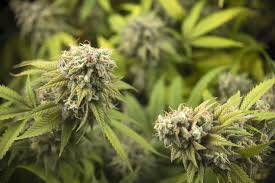African sativa strains such as Congolese Red, Durban Poison, and Malawi Gold commanded a high demand around the 1970s to early 90s. Cannabis consumers from Europe and even as far as the USA imported these African landrace sativa varieties due to their potent physical stimulation and intense cerebral effects. These strains are steadily making a comeback to the global scene thanks to the legalization of recreational and medical consumption in Europe and America.
Marijuana legalization has contributed to the rising demand for landrace cannabis seeds. Cultivators who feel nostalgic towards cannabis breeds that were popular during the 70s and 90s, eagerly hunt for the clones and seeds online plus in various cannabis events.
Here are some recommendations on how to successfully cultivate African sativa strains inside a grow room or tent.
1. Select A Breed That Adapts Perfectly To Foreign Environments
African landrace cannabis strains found on or close to the equator, usually adapt perfectly to foreign climates. Sativa varieties known for this trait include the Congolese Red, Kilimanjaro, Durban Poison, and Malawi Gold.
This geographical region is ideal because it’s at the border of the northern and southern hemispheres. Plants growing near the equator experience weather conditions that are present in both spheres, and this enhances their ability to adapt to different climates.
2. Insist On Getting Pure Genetics
Some clone or seed sellers may offer you an African sativa strain that’s not pure because it originated from a cross between the original breed and a different cannabis variety. Sometimes hybrids tend to be genetically unstable and this shortcoming can produce hermaphrodite plants. In addition, the characteristics of one parent can dominate the new genetics to the point where only a few traits from the African sativa are noticeable.
A cultivator who seeks after the most pure genetics instead of hybrids enjoys two advantages. A landrace strain that has its genetics intact enables the cultivator and other consumers to enjoy its full range of characteristics. Secondly, you have a predictable outcome in terms of yield, especially when using feminized seeds where the chances of hermaphroditism are minimal.
3. Study and Replicate The Conditions Found In The Sativa’s Native Environment
African cannabis growers mainly practice outdoor cultivation. They plant the crop at the beginning of the long rainy season, usually around April to May. Day temperatures range from 14-23 degrees Celsius accompanied by low humidity.
Soil is crucial for the survival of landrace plants, but some breeds also thrive on hydroponics. A good number of African sativa strains originate from areas with fertile volcanic soil. The plants can adapt faster to the new surroundings by creating a potting mix that contains a nutrient mix and pH replicating volcanic soil.
4. Prepare Adequate Space For Tall & Bushy Plants
African landrace sativa plants can grow up to eight feet tall and develop large bushy branches. A cultivator who’s running their legal grow operation from home will require a 4 X 4 X 8ft grow tent. Applying Low-Stress Training during vegging enables the plant to channel more energy toward horizontal growth.
5. Store Your Seeds In A Cold, Dark, and Dry Space
If you’re planning to grow the seeds after several months, proper storage is necessary to avoid them consuming the food that provides energy during germination. Put the seeds inside a ziploc or mylar bag then put it inside a plastic container. Fill the container with rice and shut it with an airtight lid. Store the container inside the fridge until it’s time to germinate the seeds.


